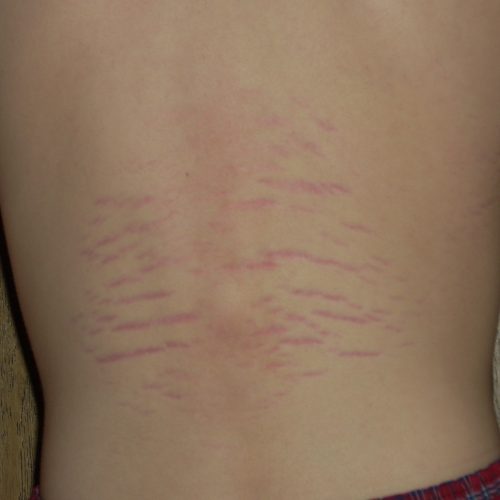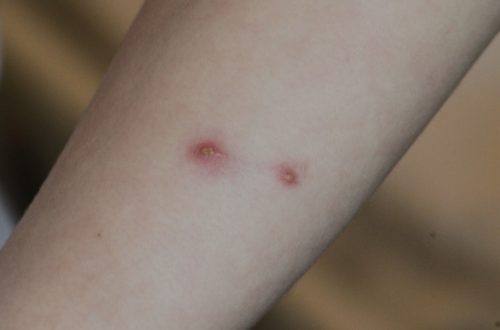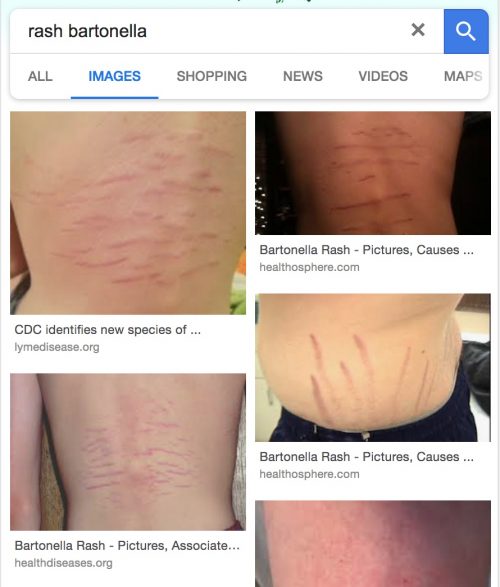
Due to false information on the internet, people are becoming panicked that perfectly normal stretch marks are a “Bartonella rash” or “Bartonella tracks”. This unnecessary anxiety is similar to the unnecessary anxiety we see with Lyme disease.
Usually, it is the same misinformed individuals spreading false information about both Bartonella and Lyme disease. Bartonella is not a tick-borne disease or Lyme co-infection, but this fact is not stopping victims from being falsely diagnosed with both.
See full LymeScience article: Bartonella: Not a tick-borne disease or Lyme co-infection
Celebrity Chrissy Teigen calls her stretch marks “stretchies” while actress Jameela Jamil proposed renaming them “Babe Marks.”
Stretch marks are very common. According to Medscape:
Approximately 90% of pregnant women, 70% of adolescent females, and 40% of adolescent males (many of whom participate in sports) have stretch marks.
See more at the American Academy of Dermatology: Why stretch marks appear and how to get rid of them
Stretch marks, also called striae distensae, are not harmful to anyone’s health. Below is a photo of typical stretch marks:

Johns Hopkins dermatologists studied the issue in 2018 and found that unsubstantiated information about Bartonella is being spread by Lyme-oriented web sites (such as lymedisease.org, lymeactionnetwork.org, and lymeneteurope.org).
The dermatologists also found that horizontal stretch marks of the lower back:
- Have nothing to do with bacterial infections, including Bartonella and Lyme disease.
- Are associated with rapid growth spurt, tall stature, and family history of stretch marks.
- Are not related to chronic medical conditions or anabolic steroid use.
- Are not a reason to order more medical testing.
If you are concerned about skin issues, we recommend a board-certified dermatologist. We recommend avoiding unscientific practitioners, including those who market themselves as Lyme literate, functional, integrative, naturopathic, and holistic.
Bad info on Google
A Google Image search for “rash bartonella” returns photos of streaked rashes that are likely stretch marks and not skin manifestations of Bartonella. The top hit from the search is from the pseudoscience organization LymeDisease.org.
No reputable science organization features photos like this of Bartonella. One of the images is just a mislabeled version of the Wikimedia stretch marks image.
What is Bartonella?
See full LymeScience article: Bartonella: Not a Lyme coinfection, many false diagnoses
Bartonella is a genus of bacteria. The most common species is called Bartonella henselae, which causes cat-scratch disease because it is spread by cats (and not ticks).
This is a photo of papules caused by Bartonella henselae after a cat scratch:

Cat-scratch disease usually clears up on its own and results in lifelong immunity. The illness can be more severe in a small minority of patients, for example the immunocompromised.
There is significant disease mongering about Bartonella. This means that the diagnostic boundaries of Bartonella are being expanded and that Bartonella is aggressively and disproportionately being promoted to the public.
Real Bartonella bears little resemblance to the false “Chronic Bartonella” diagnoses commonly found in Chronic Lyme pseudoscience groups.
References for this article can be found on our Bartonella page.
